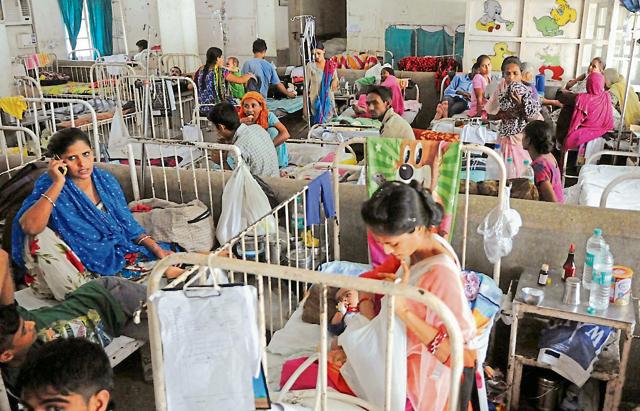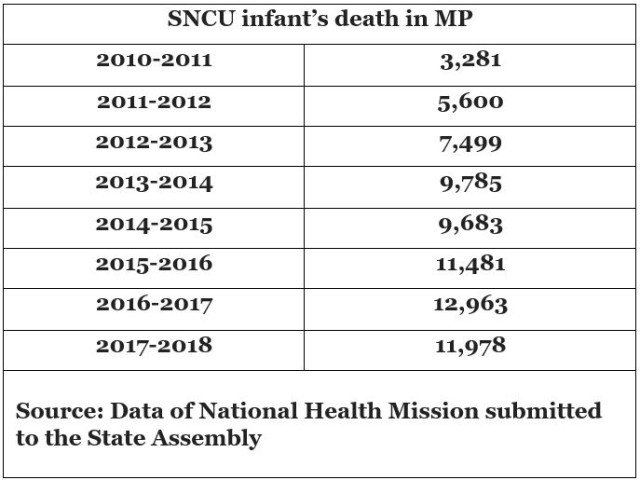Doctor’s shortage claims lives of 72,000 infants in 9 years in Madhya Pradesh.
 Image: Hindustan times.
Image: Hindustan times.
Not so long ago, a heartbreaking incident, where nearly 70 infants died of lack of oxygen supply in Baba Raghav Das Medical College, Gorakhpur, Uttar Pradesh, has stirred the collective conscience of the people in the Country. Now another incident which is too horrendous that it can make people quiet is slowly unveiling in Madhya Pradesh. It is a well-known fact that India’s doctor-patient ratio is considerably low. In Madhya Pradesh, the shortage of medical staff, especially doctors have claimed the lives of around 72000 infants over the last 9 years. It doesn’t mean that such incidents are not happening in other states either.
As per the National Health Mission data submitted to the state assembly, between 2009 and 2017, as many as 72,000 infants died in Special Newborn Care Units (SNCUs) of government hospitals across the state of Madhya Pradesh.
The sanctioned strength of the government doctors in the state is 8,156. But as of 2017, the total number of government doctors in the state is just 4367, which means that nearly 47% of the sanctioned posts are still vacant. These include posts in district and sub-district hospitals and primary and community health centers. Such grim situations don’t end with the shortage either. Hundreds of doctors are operating several administrative posts in various departments of the state instead of working in the hospitals. When the state is struggling with the shortage of doctors, which resulted in the death of 72,000 newborns between 2009 and 2017, nearly 277 senior doctors of the state government are working in the administrative capacity in different departments. Another fact relying upon this condition is that around 50 doctors in the state are currently absent from their duties for a long span.
When it comes to the specialist doctors, the situation is even more dreadful. Of the total 3,273 sanctioned posts, only 1,126 are filled, which means, 66% of the posts are yet to be filled. The high rate of infant mortality rate is somewhat ironical. The state government said they’ve improved their health infrastructure. But the increased infant mortality rate has put their claims to a question mark. Also, the state government is planning to set up seven new medical colleges in which the government requires at least 1,200 doctors to run these colleges. The state government, in 2017, had applied to the Union Health Ministry seeking permission for giving admissions for 800 new seats in MBBS course in seven new government medical colleges for the academic session 2018-19. As per the rules of Medical Council of India, only doctors with a minimum experience of four years can teach. But following the shortage of doctors, the question that from where it will get doctors to run the colleges remain unanswered.
Commenting on the infant mortality issue, Public and Family Welfare Minister of the state Rustam Singh said. “Consistent efforts are being made by the state government to improve the healthcare services for the residents. Plans are being chalked out to reduce the infant mortality rate. Doctors have been deputed to other departments out of necessity, but soon they will be transferred to their original duties.”
Source: National Herald.